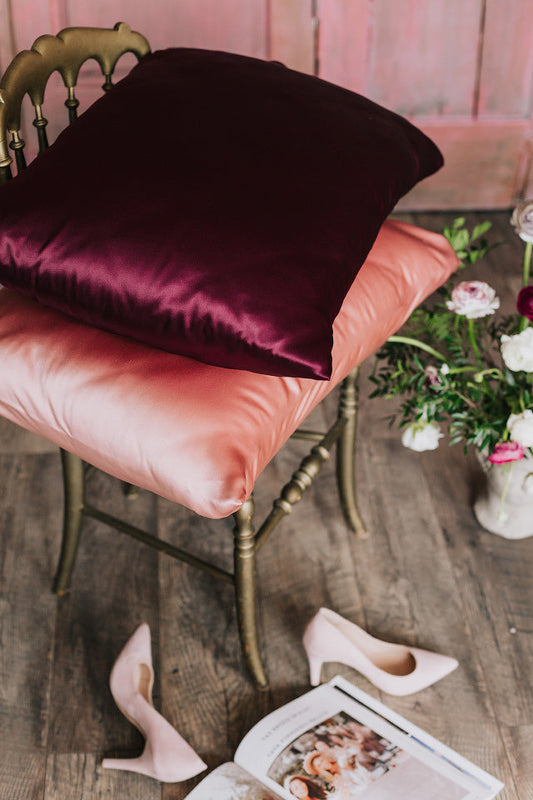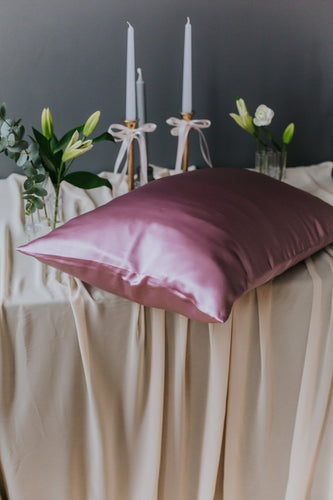Silk is a natural fiber that is obtained mainly from the larva of the Mulberry silkworm. It is a filament fiber, which means that it is a very long fiber - from 500 to 1500 m. 10-13 microns in diameter. It is one of the oldest known and widely used fibers. Silk can be used to weave fabrics such as chiffon, organza, mikado, taffeta, satin, velvet, charmeuse, etc.
A wide variety of products can be produced from silk fabrics, such as blouses, dresses, scarves and bed linen. Silk fluff, obtained from the protein in silk fiber, is used in cosmetics - shampoos, conditioners and creams.
Silk properties
Natural fibers will always be "friendly" with the skin and body. The properties of natural fibers will provide comfort, good moisture absorption (i.e. sweat) and will be breathable (you will not have to sweat much). Silk fiber is shiny, pleasant to the touch, soft and at the same time one of the most durable natural fibers.
It has high elasticity, so it has good drape properties and wrinkles little. The strength of silk fiber decreases under the influence of body sweat and prolonged sunlight. A wet silk skein is also less durable, so it is recommended to wash silk fabric products and clothing by hand, in a dry cleaner or in a particularly gentle washing mode using detergents intended for silk and delicate linen.
One of my favourite books is Fashionpedia The book has the most necesary information about materials, fibers and fabrics. I advice to have this who ever wants to know more about these topics.
Briefly about the properties of silk
• One of the most durable natural fibers;
• absorbs moisture well;
• good color fastness, as a result of which clear and beautiful colors can be obtained;
• fades and becomes unstable under the influence of prolonged sun and sweat;
• when burning, burns slowly and smells like burning feathers and hair.
• tends to shrink
• easily accumulates static electricity
• wrinkles little
Care of silk products and clothing
Sometimes we do not want to pay special attention to the care of clothes, but proper care and maintenance of each garment will ensure its long service life. The longer a particular garment lasts, the less often it needs to be purchased new. This saves both money and maximizes the use of existing resources and does not consume new ones.
Washing Silk
It is recommended to wash silk fabric products and clothing by hand, dry-clean or in a particularly gentle washing mode using detergents intended for silk and delicate clothing. When washing in a washing machine, a laundry bag should be used, which can be purchased at a hardware store or made at home.
Choose a good washing liquid, for example Tenestar or Ulrich natürlich liquid detergent that is also good for baby and childrens clothing. You can choose any other washing detergent that is sutable for silk and delicate fabrics.
Impact of air
Too dry air will cause silk clothing to become electrified. To reduce the electrification of silk clothing, it is recommended to humidify the air. Dry silk clothing separately from other clothing and avoid contact with wool products. Iron clothing at a low temperature without using steam (steam / humidity and high temperatures reduce the strength of silk fibers).
Trend
Currently, silk fabrics and products are becoming increasingly popular. Silk hair scrunchies and bed linen are in demand, not only because of fashion and the particularly soft feel of silk, but also because of silk's moisturizing properties.
Now in trend are hair scrunchies and pillowcases. Use them on a daily basis to significantly improve the condition of the skin and hair - they are constantly moisturized, maintain softness and protect hair from breakage. Chech oout also Shop section and you will find trendy silk robes and nightwear.




